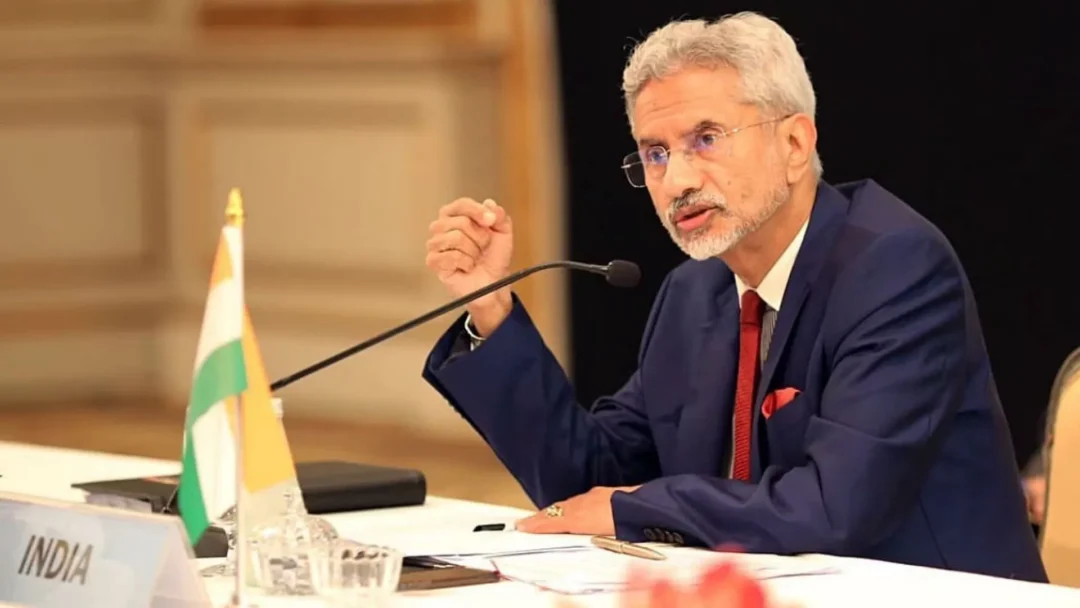S Jaishankar Clarifies ‘75% Progress’ in Border Dispute Talks with China

External Affairs Minister S. Jaishankar clarified recent comments regarding progress in India’s border dispute talks with China, stating that the “75%” completion he referred to pertains only to the disengagement of troops in eastern Ladakh. Speaking at the Asia Society Policy Institute, Jaishankar explained that while troop disengagement had advanced significantly, other critical aspects of the dispute remain unresolved.

Clarifying Disengagement Progress
Jaishankar elaborated that his earlier mention of 75% progress was limited to the disengagement process between Indian and Chinese troops in key friction points along the Line of Actual Control (LAC). “When I said 75% of it has been sorted out, it’s only the disengagement. So, that’s one part of the problem,” Jaishankar noted. He emphasized that while this is a positive development, it addresses only a fraction of the broader issues surrounding the border dispute.
(Read more: This kind of treatment of BSF shows that border security is not a priority. This must change)
Covid-19 Tensions and Clashes
Reflecting on the origins of the current standoff, Jaishankar pointed out that China’s violation of previous border agreements and its increased troop deployments during the Covid-19 pandemic heightened tensions in eastern Ladakh. This led to the deadly Galwan Valley clash in 2020, where troops from both sides suffered casualties. “We have a difficult history with China… During the pandemic, China moved a large number of forces in violation of our agreements. It was likely a mishap would happen, and it did,” Jaishankar said.

This violation, he explained, has cast a shadow over the broader bilateral relationship between India and China. The minister underscored that these border tensions have affected various other dimensions of India’s relationship with Beijing.
Managing Friction Points, Patrolling Issues Remain
Jaishankar shared that while disputes at major friction points have been “managed,” challenges persist around determining patrolling rights in sensitive border areas. He stressed that resolving these issues will be critical in moving forward. “We’ve been able to sort out much of the disengagement in the friction points, but some of the patrolling issues need to be resolved,” Jaishankar explained.
(Read More: Heroin Worth ₹15 Crore Smuggled via Drone Near International Border)
He further noted that de-escalation, or reducing the number of troops in the region, will be the crucial next step in restoring stability and improving relations between the two nations.
Future of India-China Relations: A Complex Outlook
Looking beyond the immediate border conflict, Jaishankar emphasized that India’s relationship with China is integral to the future stability of Asia. However, he warned that New Delhi must be prepared to navigate “volatility and unpredictability” in the international landscape, particularly in its dealings with China.
India-China Talks: Recent Developments
In a recent development, India and China held the 31st meeting of the Working Mechanism for Consultation & Coordination on India-China Border Affairs (WMCC) in Beijing on August 29. This meeting aimed at finding resolutions to the ongoing standoff in eastern Ladakh. Both sides agreed to intensify communication to narrow their differences and address outstanding issues. India reiterated that respecting the positions on the LAC is essential for restoring normalcy in bilateral relations.
Jaishankar’s remarks highlight the complex nature of the India-China border dispute. While significant progress has been made in disengaging troops from key areas, critical issues such as patrolling rights and de-escalation remain unresolved. As India and China continue to engage in dialogue, the road ahead will require careful diplomacy and preparedness for an unpredictable geopolitical environment.
(With ANI inputs)



Leave a Reply